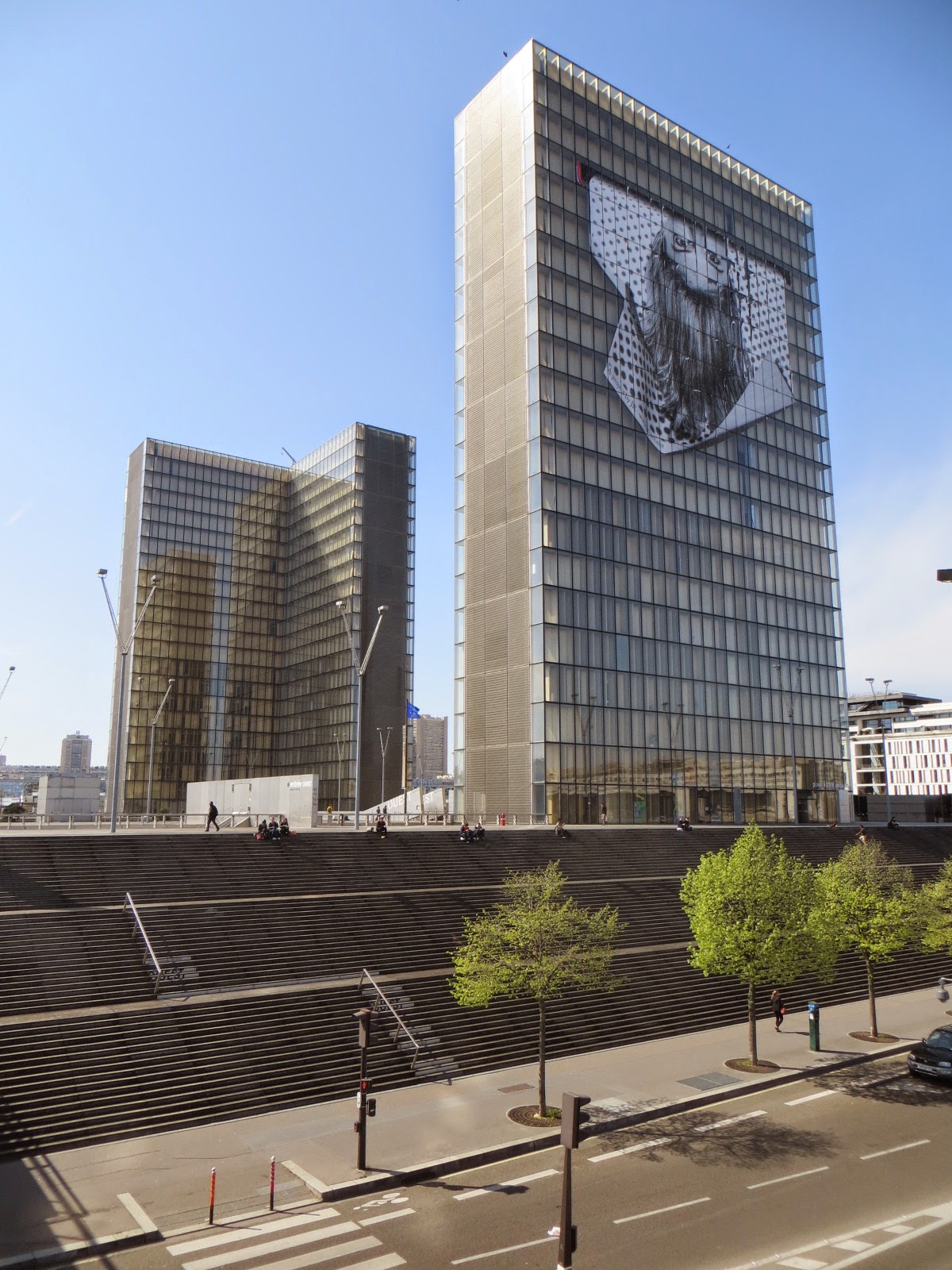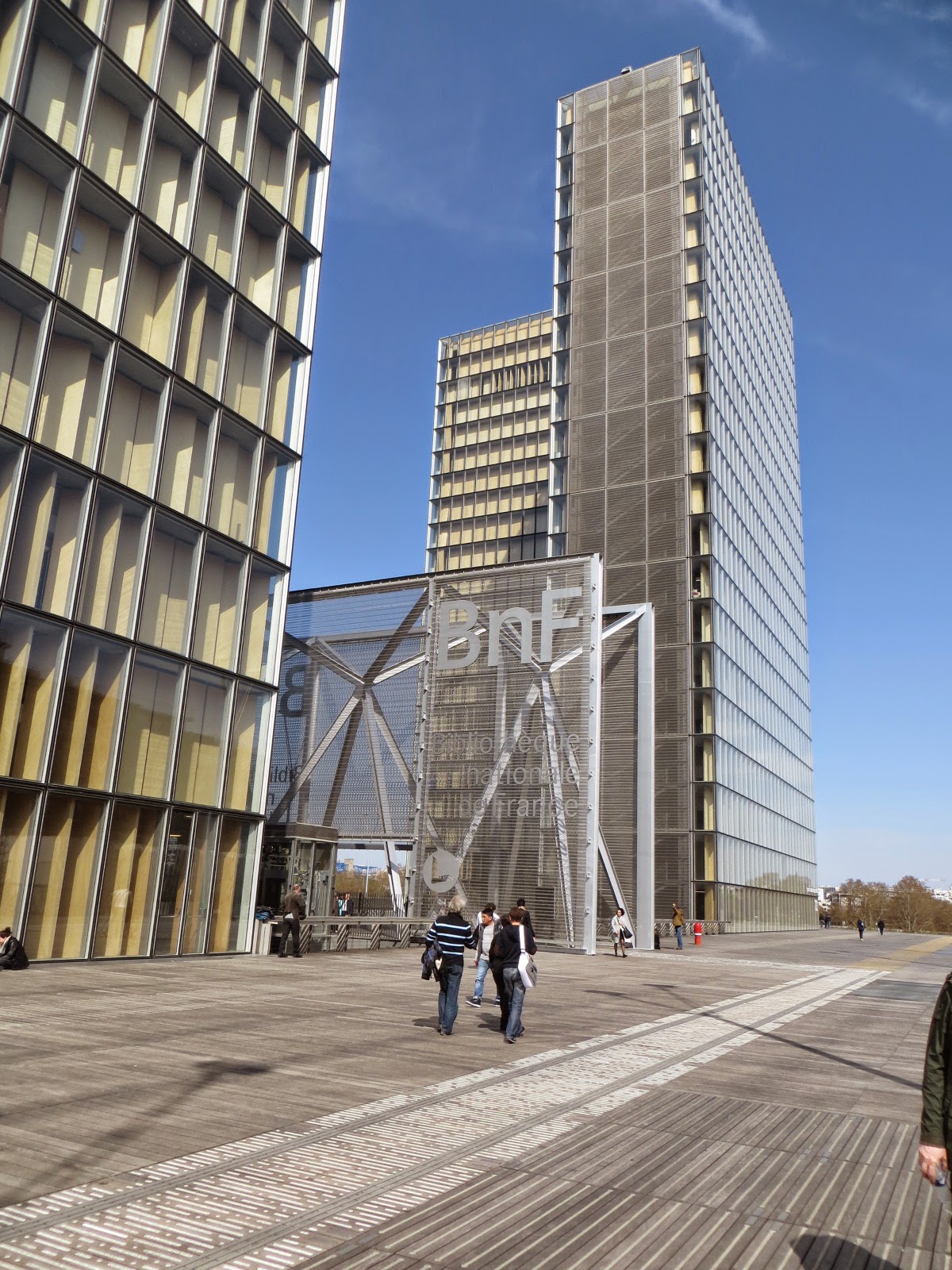Bibliotheque Nationale de France Francois Mitterand, Paris
'I am as free as nature first made man,
Ere the first base laws of servitude began,
When wild in woods the noble savage ran.'
John Dryden 'The Conquest of Granada' 1672
The 'wild’ wood at the heart of Dominique Perrault's Bibliotheque
Nationale evokes Enlightenment concepts of the human spirit, but is this
monumental shrine to the cult of the book anachronistic in a digital
age?
It sometimes seems as though millennia of paper-based literary
culture have been rendered anomalous in the space of a few years by the
advent of digital media. Even when Dominique Perrault's Bibliotheque Nationale building was completed in 1996, the notion of a book was
endowed with physicality, that has since been shed with astonishing
alacrity. If the book as physical entity is heading for obsolescence,
where does that leave the library as a building type?
The Bibliotheque Nationale is no ordinary library however, but a
building of visionary ambition in the grand French tradition. This
monumental pile, defined by corner towers of book stacks, is more than a
building, it is an ordered fragment of an ideal city, upholding the
Enlightenment vision epitomised in Boullee's Bibliotheque du Roi (1785).
The reading rooms are arranged around a courtyard packed with a 'wild'
wood, invoking Dryden's 'Noble Savage', a seductive origin myth for
western culture often associated with Rousseau, ideologue of the
French Revolution.
Ambitious links have been created between the library and its
environs, including a new park on the facing bank of the adjacent Seine.
A sinuous pedestrian bridge delivers visitors at the level of the
entrance court on the roof of the library, but this is high above the
park and the banks of the river. The inflated scale of the buildings and
stepped embankment enclosing the park create a claustrophobic quality. Although the library terrace overlooking the
woodland garden is open to the public, the generosity of this gesture is undermined by the
intimidating barrier created by significant level changes. Access from this level back down to a library entrance
within the court is clumsily handled. Nonetheless, turning conventions
about levels and arrival on their head at the Bibliotheque creates
wonderfully unexpected moments. The corner book stacks might defy
logic, but they give the building great presence in the city and provide
a point of reference for the new quarter developing in this former
industrial hinterland.
Digital communication enables us to enjoy Rousseau on the Metro or
in the park: it offers new opportunities to gain access to books and
form associations unbound by geographical location, but cities allow the
congenial association of people in many different activities. Surely
enjoying access to the collections of great libraries will continue to
be one of these.
See previous blog on Max Dudler's Humboldt University Library Berlin (2006-2009)
See previous blog on Max Dudler's Humboldt University Library Berlin (2006-2009)
 |
| Bibliotheque du Roi, Etienne-Louis Boullee (1785) |




